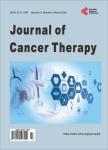Complications Following Surgery for Gastric Cancer: Analysis of Prospectively Collected Data
Complications Following Surgery for Gastric Cancer: Analysis of Prospectively Collected Data作者机构:Department of Surgery and Translational Medicine University of Florence Florence Italy Clinical Trials Coordinating Center Azienda Ospedaliero-Universitaria Careggi Florence Italy
出 版 物:《Journal of Cancer Therapy》 (癌症治疗(英文))
年 卷 期:2014年第5卷第14期
页 面:1454-1466页
学科分类:1002[医学-临床医学] 100214[医学-肿瘤学] 10[医学]
主 题:Gastric Cancer Complications Clavien-Dindo Classification Survival Probability
摘 要:Background and Aims: The complication rate after surgery for gastric cancer varies according to the particular definition of morbidity, so it’s necessary to report them using a standardized method, the Clavien-Dindo system. The purpose of this study was to prospectively analyze all post-gastrectomy complications in patients with gastric adenocarcinoma according to the severity grade using Clavien-Dindo system, in order to identify risk factors for postoperative complications and their prognostic significance on survival. Methods: This study is based on data from 90 consecutive patients who underwent gastrectomy for gastric neoplasia between January 2010 and February 2014 at the same unit. 15 patients were excluded (benign tumors, GISTs, missing data). Complications were categorized according to the Clavien-Dindo classification (uncomplicated patients vs patients classified ≥Grade I). The following risk factors were studied: age, BMI, sex, operation method, extent of resection, duration of surgery, transfusions, TNM staging, and lymph node ratio. Multivariate logistic regression was used to evaluate the association between risk factors and presence of complications. To assess the effect on overall survival, after selection of covariates using backward elimination, the Cox proportional hazard model was applied. Results: Among these patients, 49 (65.3%) developed complications, stratified as follows: Grade I, 6 (8%);Grade II, 24 (32%);Grade III, 6 (8%);Grade IV, 13 (17.3%). The laparoscopic technique (OR = 0.050;95% CI = 0.005 - 0.550, p = 0.0143) and no transfusions (OR = 0.219;95% CI = 0.058 - 0.827, p = 0.0251) were found to reduce the incidence of postoperative complications in the multivariate analysis. With regard to the survival analysis, lymph node ratio, malnutrition, extended resection and presence of complications were significant predictors of reduced survival in the multivariate analysis. Conclusions: Some variables can predict the risk of postoperative complications, the occurrence of which is a predictor of reduced probability of survival. In this respect it’s essential to reduce complications.



